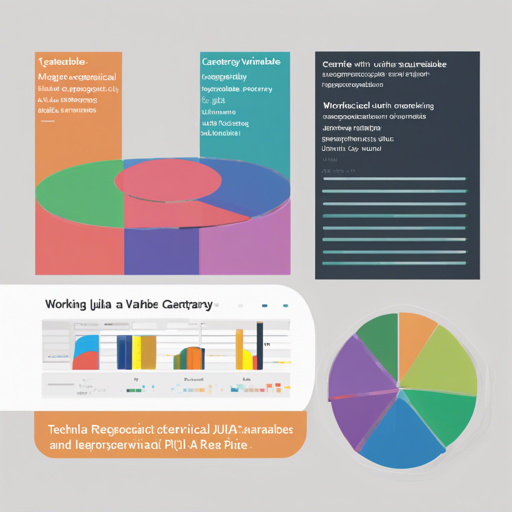Categorical variables are a fundamental concept in data analysis, representing data that can take on a limited, fixed number of possible values, such as “yes” or “no”, or “low”, “medium”, “high”. In this article, we delve into the CategoricalArrays.jl package in Julia, which equips you with robust tools for handling categorical variables, including both unordered and ordered categories.
Getting Started with CategoricalArrays.jl
To begin, you need to install the CategoricalArrays.jl package. You can easily do this by executing the following command in your Julia REPL:
using Pkg
Pkg.add("CategoricalArrays")Using Categorical Arrays
Once installed, you are ready to use CategoricalArrays.jl. Incorporating categorical variables into your code is as simple as creating an array with the specified categories. Here’s how:
using CategoricalArrays
# Creating an unordered categorical array
categories = CategoricalArray(["apple", "banana", "orange", "apple", "banana", "missing"])Now, let’s explain this step with an analogy:
Imagine you have a fruit basket containing various fruits. Each fruit represents a value in your dataset. The CategoricalArray acts like a label that organizes your fruits into distinct categories. In this case, the categories would be “apple”, “banana”, and “orange”. Just as you might separate these fruits into labeled bins to keep track of which types you have, CategoricalArrays keep your data organized and easy to manage.
Handling Ordered Categories
We can also define ordered categories (ordinal variables) with CategoricalArrays.jl. For example:
ordered_categories = CategoricalArray(["low", "medium", "high"], ordered=true)This creates an ordered category where the sequence “low” < "medium" < "high" makes logical sense, allowing us to perform operations based on this ordering.
Adding Missing Values
In data analysis, it’s common to encounter missing values. CategoricalArrays.jl has you covered here. You can include missing values by explicitly specifying them in your categorical arrays, as shown in the earlier examples. The package seamlessly integrates with missing data, allowing you to focus on analysis without worrying about data structure conflicts.
Troubleshooting Common Issues
If you run into issues while working with CategoricalArrays.jl, here are some troubleshooting tips:
- Missing Dependencies: Ensure you have all required packages. Running
using Pkg; Pkg.update()can resolve version inconsistencies. - Handling Missing Data: Make sure that missing values are properly inputted; otherwise, you might get unexpected results. Reference the documentation for handling missing data correctly.
- Documentation Access: If you need clarification or more information, you can find detailed documentation here.
For more insights, updates, or to collaborate on AI development projects, stay connected with fxis.ai.
Conclusion
Working with categorical variables in Julia has never been easier, thanks to CategoricalArrays.jl. By understanding how to create and manage categorical arrays, you’ll be well-equipped to analyze your data efficiently.
At fxis.ai, we believe that such advancements are crucial for the future of AI, as they enable more comprehensive and effective solutions. Our team is continually exploring new methodologies to push the envelope in artificial intelligence, ensuring that our clients benefit from the latest technological innovations.

